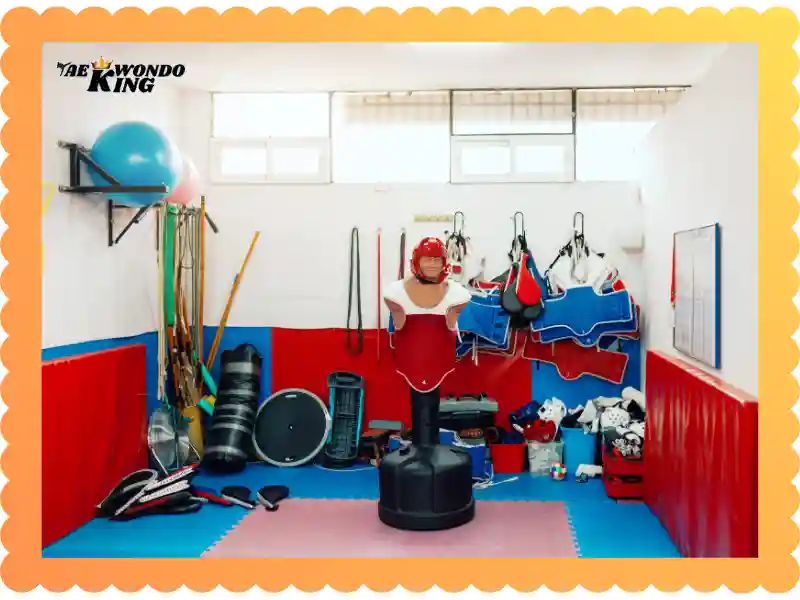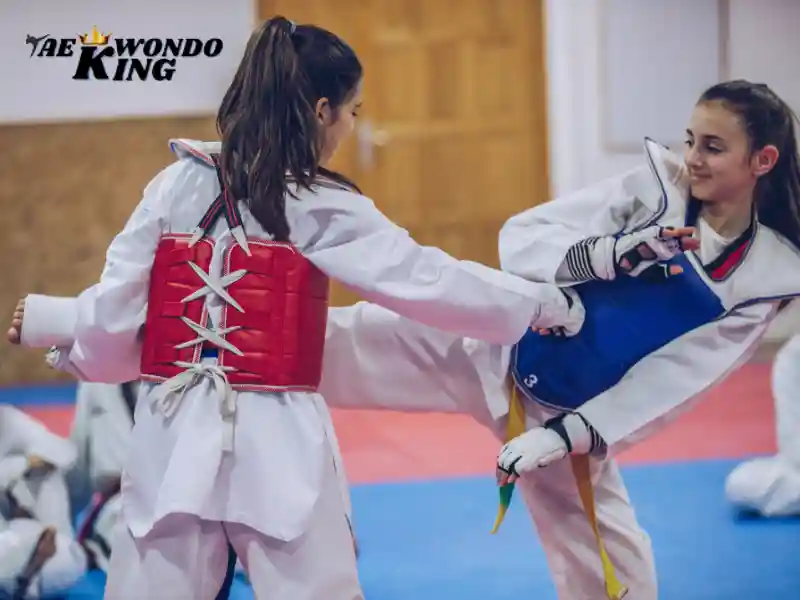
Have you ever felt the spark of intrigue watching a Taekwondo demonstration? The power, the grace, the focused energy – it ignites a desire for strength, discipline, and self-discovery. If you’re considering taking that first step into the world of Taekwondo, choosing the right Taekwondo gym is crucial. Here’s your guide to finding the perfect Taekwondo training ground (dojang) to empower your journey.
Finding the Right Fit:
Know Your Goals:
Are you seeking self-defense training, aiming for competition, or looking for a fun way to improve fitness? Different dojangs cater to these various goals.
Location and Schedule:
Pick a gym that’s conveniently located and offers class timings that align with your schedule. Consistency is key to progress in Taekwondo.
Trial Classes:
Most reputable dojangs offer introductory classes. Attend a few to experience the atmosphere, instruction style, and student interactions.
Qualities of a Champion Dojang:
Experienced Instructors:
Look for instructors with strong qualifications, a passion for teaching, and a focus on safety and proper technique.
Positive and Inclusive Environment:
The dojang should feel welcoming and respectful, fostering camaraderie and celebrating individual growth.
Structured Curriculum:
A well-defined curriculum ensures a progressive learning experience, taking you from basic techniques to advanced skills.
Focus on Safety:
The gym should prioritize safety with proper equipment, well-maintained training mats, and instructors trained in injury prevention.
Stepping Inside the Dojang:
Ambiance and Energy:
The atmosphere should be positive, welcoming, and respectful. Look for instructors who are patient, encouraging, and passionate about Taekwondo.
Safety First:
Observe the facilities. Are they clean, well-maintained, and equipped with proper safety gear? Do instructors prioritize proper techniques to prevent injuries?
Class Structure and Student Interaction:
Sit in on a class if possible. Is the instruction clear and engaging? Do students of different skill levels train together harmoniously?
Beyond the Basics:
Class Variety:
Look for a dojang offering a variety of classes, such as separate programs for adults, and children, and competition-focused training.
Life Skills Development:
Does the program incorporate values like discipline, respect, perseverance, and goal-setting into its teachings?
Community and Support:
A strong sense of community within the dojang can enhance your motivation and enrich the overall experience.
Remember, your Taekwondo gym is your training ground, support system, and potentially, extended family. Choose wisely, and step onto the path of martial arts excellence!
Frequently Asked Questions
Is Taekwondo a good workout?
Absolutely! Taekwondo combines cardio, strength training, and flexibility exercises, making it a well-rounded workout that improves overall fitness.
Am I too old to start Taekwondo?
Not at all! Taekwondo gyms welcome people of all ages and fitness levels. Many dojangs offer adult beginner classes specifically designed for those new to the art.
What should I wear to my first Taekwondo class?
Most gyms recommend comfortable workout clothes like loose-fitting pants and a T-shirt. As you progress, you can invest in a proper Taekwondo uniform (dobok).
How much does it cost to join a Taekwondo gym?
Membership fees vary depending on the gym’s location, class schedule, and instructor qualifications. Many dojangs offer introductory packages or trial classes to give you a taste of the experience before committing.
Are there any contracts involved when joining a Taekwondo gym?
Membership structures vary between dojangs. Some offer pay-as-you-go options, while others have monthly or yearly memberships. It’s best to inquire about their specific policies before signing up.
What kind of equipment do I need to start Taekwondo?
In the beginning, comfortable workout clothes are sufficient. Most dojangs sell doboks (uniforms) once you decide to continue training. However, some may recommend mouthguards and protective gear for safety during sparring practice.
How often should I attend classes to see results?
Consistency is key! Aim for 2–3 weekly classes for a noticeable fitness and skill development improvement. Discuss your goals with the instructor for personalized recommendations.
What are some benefits of Taekwondo besides self-defense?
Taekwondo promotes physical fitness, coordination, and mental focus. It also fosters self-confidence, discipline, and goal-setting skills – qualities that translate into all aspects of life.
I’m completely new to Taekwondo. Will most gyms accept beginners?
Absolutely! Most reputable dojangs offer classes specifically designed for beginners. These classes focus on basic movements, terminology, and building a strong foundation in Taekwondo principles.
I’m not interested in competition; can I still benefit from Taekwondo?
Absolutely! Taekwondo offers a wide range of benefits beyond competition training. It improves fitness, coordination, and self-defense skills. It also fosters discipline, focus, and self-confidence, which translate into all life aspects.
What’s the difference between a black belt and a regular instructor?
A black belt signifies a high level of proficiency in Taekwondo. However, not all black belts are necessarily experienced instructors. Look for instructors with recognized black belts and experience in teaching students of various ages and skill levels.

Founder, Owner, and CEO of TaekwondoKing.
He is one of the top 100 martial artists in the World and among the top 20 referees in Bangladesh.
Ehatasamul Alom is an esteemed Kukkiwon Certified Taekwondo 3rd Dan Black Belt with over 15 years of experience in this dynamic martial art. Born in Rajshahi, Bangladesh, Ehatasamul’s journey with Taekwondo began at the tender age of seven. His passion led him to compete at national and international levels, where he has bagged numerous awards and honors. He is also a member of the Taekwondo National Referee Panel.
With a Bachelor’s degree in Sports Science from the prestigious Rajshahi University, Ehatasamul has a deep understanding of the technical and scientific aspects of martial arts and some other martial arts.
In 2022, Ehatasamul created the “TaekwondoKing.com” to share his knowledge, Free Resources, Values, and Real experiences. His articles focus on Taekwondo training techniques, competition strategies, Sport Products Reviews, and the art’s rich history and philosophy. He also writes about the importance of mental fortitude and discipline, key aspects of his teaching philosophy. He has already launched many sports, Taekwondo, and health-related Free online tools. His goal is to inspire both beginners and seasoned practitioners worldwide through insightful and engaging content.
If you need any help, contact Ehatasamul Alom at any time.





Oh my goodness! an amazing article dude. Thanks However I am experiencing challenge with ur rss . Don’t know why Unable to subscribe to it. Is there anyone getting identical rss drawback? Anybody who knows kindly respond. Thnkx